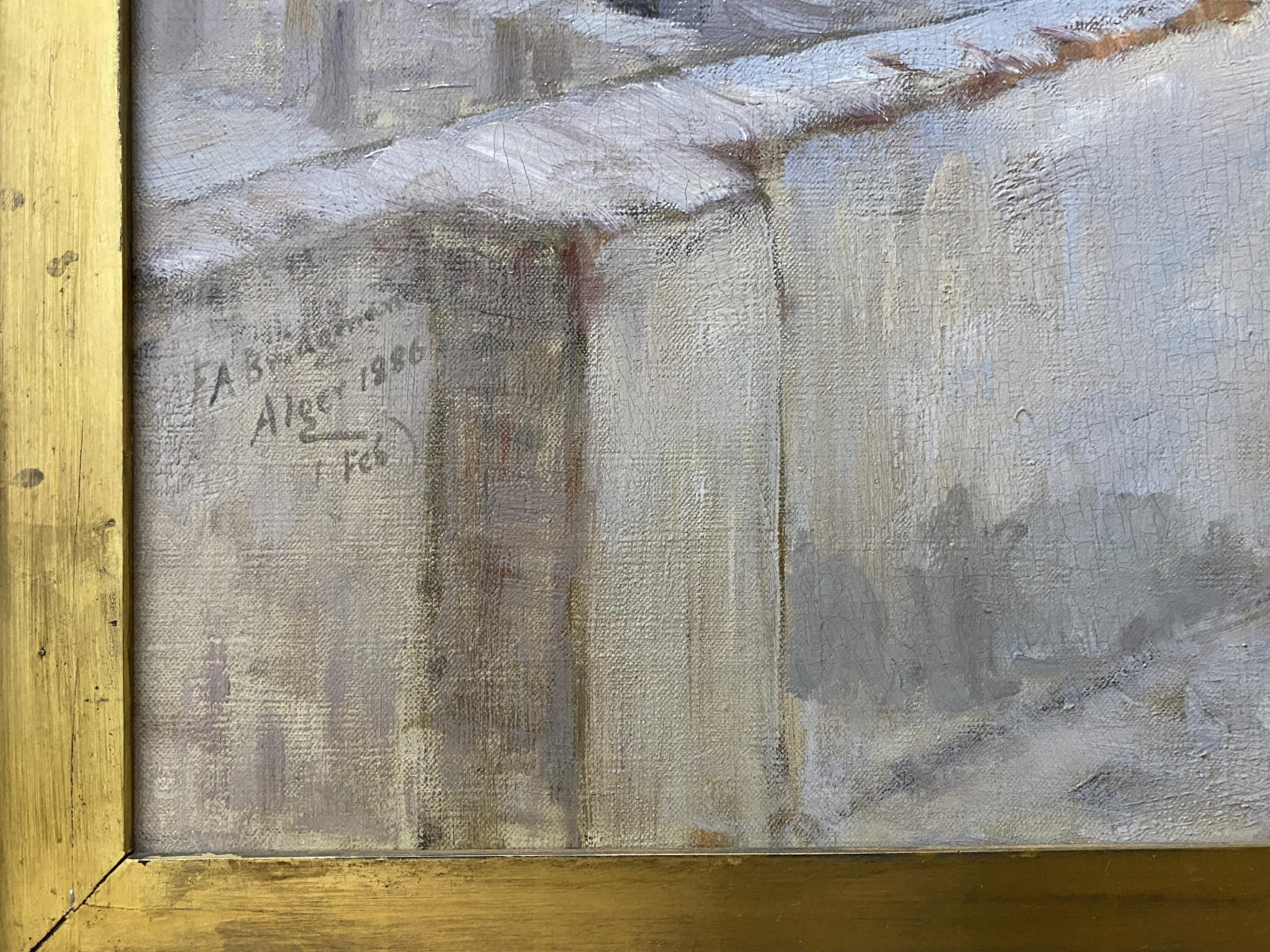






Framed: 24 1/2 x 31 1/8 inches
artist
Expatriate Frederick Arthur Bridgman’s position as one of the finest 19th century Orientalists on either side of the Atlantic is certain producing a remarkable number of pictures in his lifetime, traveling extensively and keeping company with some of the most well-known artists of the era. Born in Tuskegee, Alabama in 1847, Bridgmans’s father was a practicing physician who died when Frederick was only three. By his early teens the Bridgman family relocated to Boston where Frederick soon began to apprentice at the American Banknote Company. He excelled as an engraver as he took classes in drawing and design at night. He first exhibited a painting at the Brooklyn Art Association in 1865.
Description
Over the course of his career, Bridgman excelled in many different genres and styles. Whether Biblical recreations, Ancient Egyptian or Babylonian scenes, or contemporary Arab life, one characteristic is present through them all: the exotic. Though he became forever associated with harem women scenes, Bridgman was never afraid to head into new directions; sometimes these endeavors produced some of his most unique, and today, his most well-known paintings. Europeans of the time who were living in an ever-increasingly industrialized, departmentalized society had an insatiable appetite for the foreign, the strange, the bizarre and unusual. In the salons of the late nineteenth century, historical and Biblical subjects were often the kind of pictures that were taken the most seriously in competitions.
Shortly after painting On the Terrace, in 1890, Bridgman mounted an exhibition in New York’s American Art Gallery of four hundred canvases, nearly a third of which had sold by the time the exhibition has moved to Chicago, a testament to his skill and the popularity of Orientalism.
provenance
Christie’s New York, 27 September 1990
Christie’s New York, 2 November 1995 (listed as Algiers)
Simon Bonython, acquired at the above sale
Private collection, acquired from the above






